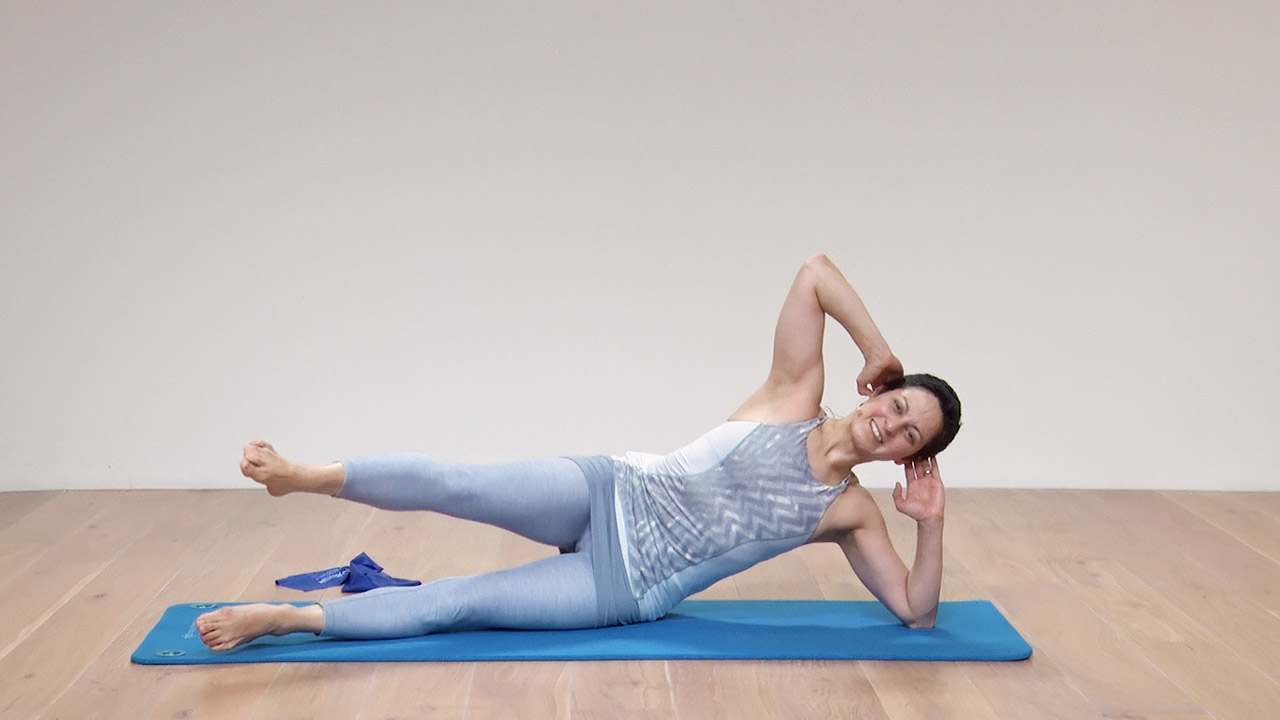When I started teaching Pilates in 1999, not many people knew what it was. Most thought that it was a side dish that you ordered at an Italian restaurant: “Pilates?? Oh yes, I had some at Massimo’s the other night. Delicious!”
I often had to summarise in one brief sentence what Pilates is and why it’s beneficial for us:
“Pilates is an exercise system that focuses on working your core.”
“Oh, so you work your abs?”
“Well…pretty much, yes.”
But that’s not the full story, of course.
What is Pilates?
Pilates is a system of movements created to build you up from the inside out. In this context ‘building up’ doesn’t mean adding muscle bulk but instead an internal coordination of support through your muscular structure.
The starting point for a Pilates practice is a specific breathing technique. The Pilates breath creates an internal support system that coordinates the diaphragm, the pelvic floor, the transverse abdominis and the psoas muscle. We usually begin with small movements to practice this ‘breath in motion’ – a way of breathing that helps to support our optimal torso alignment and stability.
These smaller movements are the building blocks for the bigger, more demanding Pilates exercises. However, even the small movements work a group of muscles, rather than just one or two.
What’s the difference between Pilates and yoga?
Back in the day, Pilates was reputed to give you ‘six pack’ abs, lean, long muscles and a toned body. This partly came about because dancers, models and actors who were already genetically thin, practised Pilates. However, that doesn’t mean it isn’t accessible to those of us who don’t fall into those categories.
Pilates and yoga are often compared as they are both practices for the mind and body. However, yoga is a centuries-old, spiritual practice, whereas Pilates is relatively ‘young’, having been created in the 20th century. Pilates is similar to yoga in that it’s a mindful movement practice with low impact and many therapeutic benefits. And like yoga, you can practice it slowly with a restorative goal, or vigorously with high energy.
However, Pilates focuses on the ‘core’ (otherwise known as the trunk or torso) and the muscles that support the spine, hips, upper and lower back, making it an excellent practice to support and complement your yoga practice.
What are the benefits of Pilates?
1. Targets imbalances bringing your body more into alignment
Pilates synchronises and coordinates the different muscle groups to create uniformity and harmony in the body. It supports your yoga practice by focusing on the smaller muscle groups that run throughout the body.
The focus on alignment and core stabilisation brings out our misalignments, weaknesses and imbalances. We all have a “better” side that we can twist further or go deeper into the pose, or a leg that goes higher or rotates more. The Pilates exercises helps us become more aware of what we need to work on, bringing us more into alignment, where our muscular (and energetic) system is happiest.
2. Helps your stability and balance
The core strengthening work of Pilates will help you balance better. Pilates also develops your proprioception (body awareness) so that you have a better feel to organise your body and know where it is and what it is doing. The combination of core strength and body awareness helps you move your body into the optimal alignment for your balance poses.
3. Helps you to recover from injury
Practising Pilates helps us to target our deep core stabilisers, which are commonly not optimally conditioned. The smaller movements access deep, internal muscles of our pelvis and spine that are highly supportive but are not accessed when doing larger movements.
Pilates exercises can be very beneficial for people who suffer from back pain or want to prevent it. Follow our Pilates for Back Pain program from Ruth Larkin to experience it for yourself. Available as part of your EkhartYoga membership.
Your Pilates Week
Work your body from top to toe with this program comprising 6 targeted Pilates classes. Suitable for all levels of experience.
4. Develops stability in the joints
For people who are naturally flexible, or people who only stretch, too much flexibility can lead to a lot of instability in the joints. Pilates teaches hypermobile people how to manage their hyper-mobility through stability and by finding optimal tension.
5. Improves body awareness
Pilates is anatomically focussed on body mechanics and how the body moves. By being aware of your biomechanics as you move, you can create better movement patterns that you can apply to your yoga practice as well as your everyday living.
6. Teaches you how to move your spine
Pilates provides a lot of spinal articulation (movements) which in turn access the deep tiny muscles that run along the vertebrae.
7. Anyone can do Pilates!
Pilates teachers often say that anyone can do Pilates. Pilates can be personalised to suit anyone and their limitations or their strengths and the exercises can be modified to accommodate anyone and any body. Not everyone can (or should) do every exercise, but the exercises can be adapted, positioning changed or props can be added to support or to give challenge to your execution of the exercises as you need.


